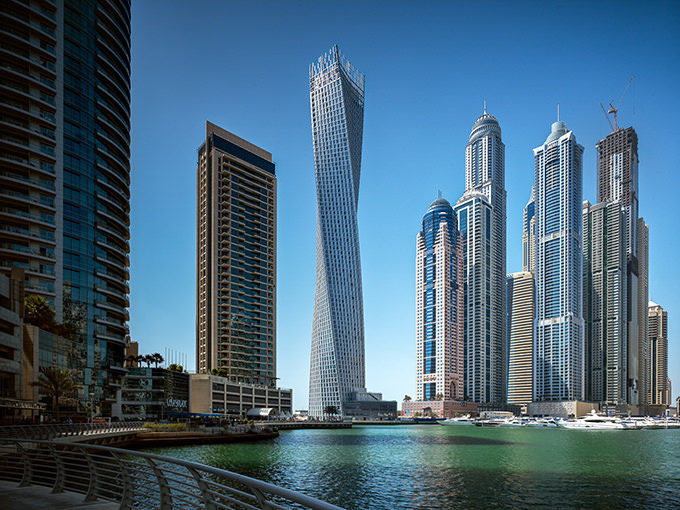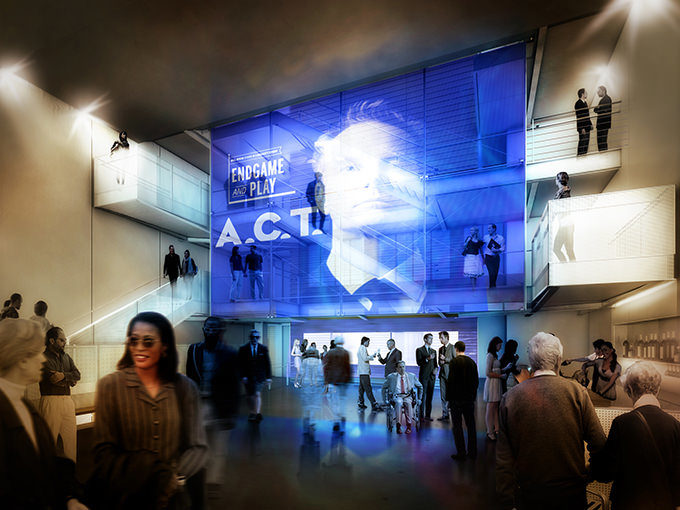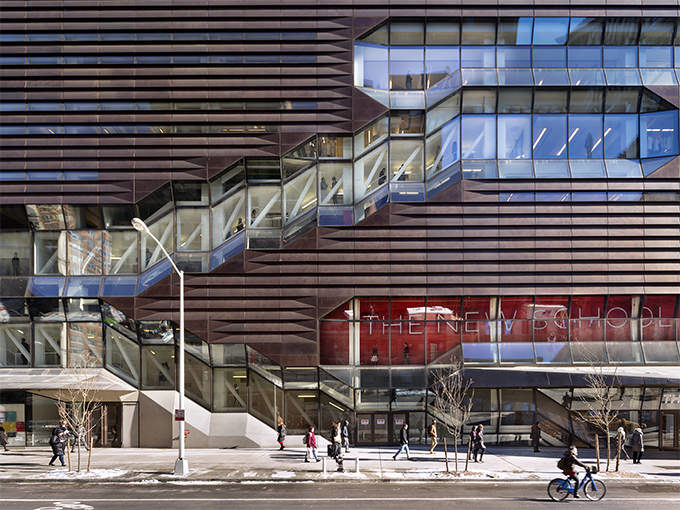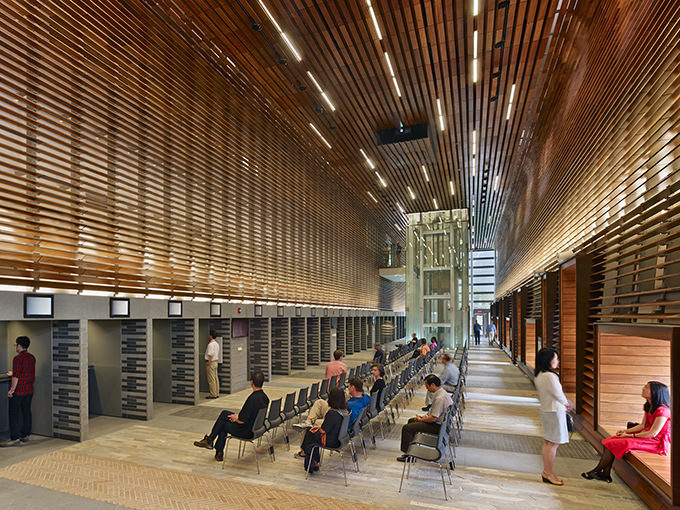



The Chicago Athenaeum Museum of Architecture and Design, together with The European Centre for Architecture Art Design and Urban Studies and Metropolitan Arts Press, have recognized four SOM projects with their American Architecture Award. The recipients were announced on October 8, 2014.
Winning projects are designed by American firms but are located across the globe. SOM’s Cayan Tower in Dubai, U.S. Consulate General in Guangzhou, China, Strand Theater in San Francisco, and University Center – The New School in New York City were each recognized for excellence in architecture and urbanism. This highly regarded honor “pays tribute to new developments in design and underscores the directions and understanding of current cutting-edge processes consistent with today’s design thinking.”
The 75-story Cayan Tower—with its helical shape, world-class amenities, and sweeping views of the Arabian Gulf—is the pure expression of the relationship between a building’s form and the structural framework that supports it. While the skyscraper’s floor plates are all identical, each is slightly rotated against the story below it, resulting in a full 90-degree twist over the course of the tower’s 307-meter rise. Cayan is the world’s tallest twisting skyscraper.
In San Francisco, the Strand Theater project calls for transforming a derelict, century-old building on Market Street into a highly visible and experimental performance space for the American Conservatory Theater (A.C.T.). The redefined venue will house a new 300-seat theater, a 120-seat black box theater, rehearsal space, stage support areas, educational facilities, a public lobby, and a cafe. The project is a key component in the regeneration of this once-vital part of the city.
Located in bustling central Manhattan, the new 16-story University Center serves as the heart of The New School, a progressive academic institution. Described as a “vertical campus,” the new LEED® Gold-certified building contains a diverse program, with academic space on the first seven floors and a 600-bed dormitory on the levels above. Social spaces are dispersed throughout the building to activate each floor. The layout was carefully planned to facilitate spontaneous interactions and collaboration.
The U.S. Consulate General in Guangzhou, China, signals a new era in the design of diplomatic facilities. Representing American values while respecting Guangzhou’s physical and cultural landscape, the project consists of seven structures on a 7.5-acre site. The dominant structure is a striking four-story building that houses the primary diplomatic facilities. Overall, the complex conveys an open, hospitable relationship between the American and Chinese people.